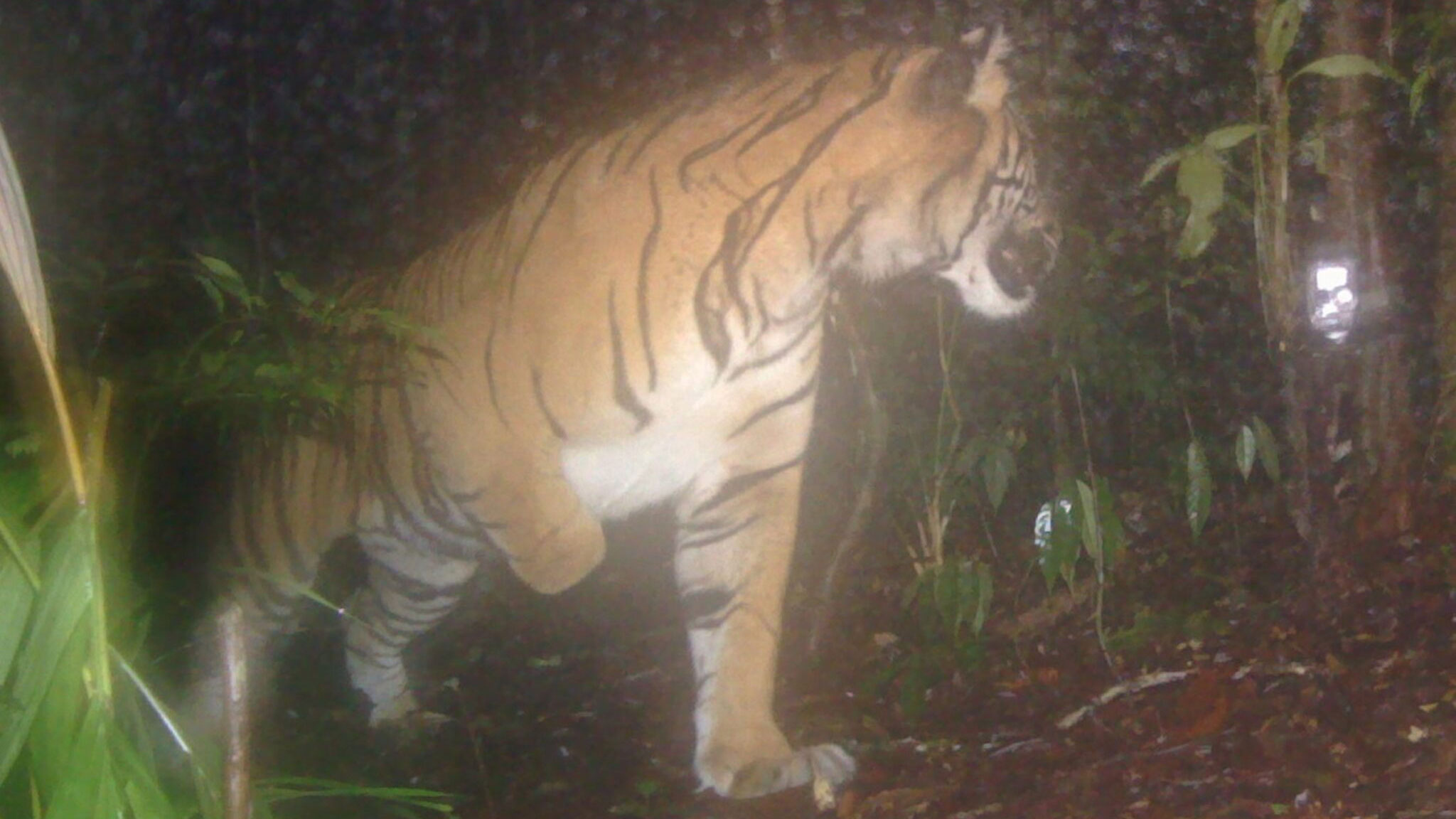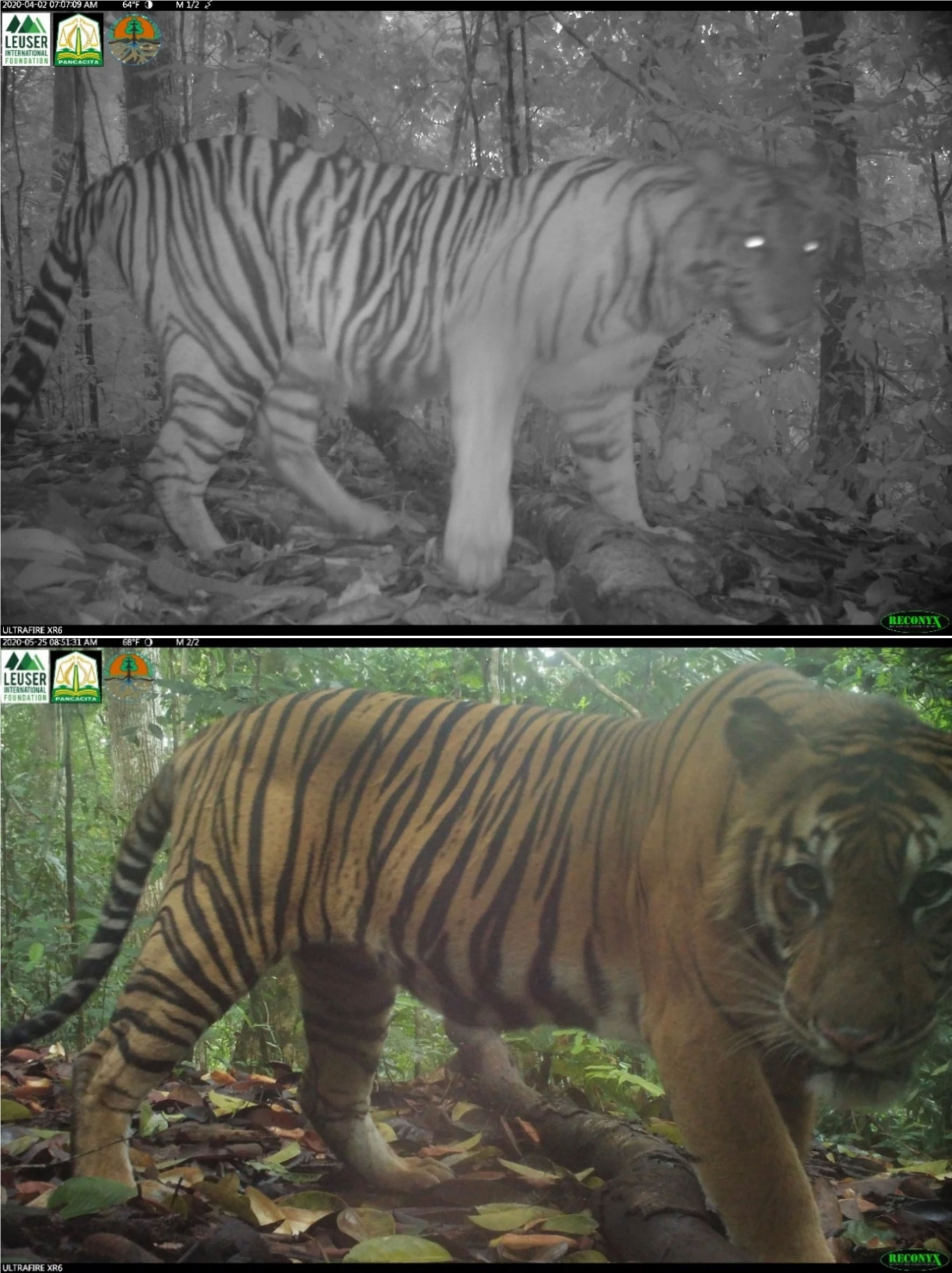Pioneering use of camera traps in Indonesia sheds first light on critically endangered Sumatran tigers
The tigers are the rarest subspecies of tiger in the world, with only 400 suspected individuals left in the wild

Conservation of threatened species is dependent on consistent population monitoring, and camera traps, or trail cameras, are a great way for researchers to do this.
Scientists have utilized camera traps to present the first study of the critically endangered Sumatran tigers and their prey in the Ulu Masen Ecosystem, Aceh, Indonesia, lending fresh urgency to calls from conservationists for greater protection efforts in the critically endangered subspecies’ northernmost stronghold forests.
A study team led by Joe Figel, a science advisor at the Leuser International Foundation installed camera traps at 52 locations across Ulu Masen’s vast landscapes. Between 2020 and 2022 they spent a total of 23 months camera trapping and amassed 6,732 nights worth of recordings, detecting tigers 39 times at 16 of the locations.
The footage caught on the camera traps allowed the scientists to identify 11 individual tigers, eight males, and 1 female, as well as two more who could not be determined, and no cubs.
Previous studies have proven that the world needs more trail cameras in more places, and have been utilized to discover new species, and to tackle the bushmeat trade.
The world needs more trail cameras in more places, first-of-its-kind study shows
The Sumatran tiger is the rarest of the tiger subspecies, and as few as 400 are thought to remain in the wild, having become vulnerable to poaching, and habitat loss.
Get the Digital Camera World Newsletter
The best camera deals, reviews, product advice, and unmissable photography news, direct to your inbox!
The researchers camera polygon spanned an area of 462 ㎢, and overlaid 4 x 4 km grid cells over the study area, with at least one camera station inside each cell.
Within each zone they secured paired cameras including one photo camera – a Reconyx HC500 or HC600 – and one video camera – a Reconyx HF2X or XR6. They powered the photo cameras with Tenergy NiMH rechargeable batteries and the video cameras were powered with Energizer lithium batteries.

They attached the cameras 40 - 45 centimeters above ground level to trees along the ridges, known to be travel pathways of both the tigers and their ungulate prey: sambar, serow, wild boar and muntjac deer.
Cameras were set up in pairs positions 3 - 4 meters away from both sides of the trail, which “permitted simultaneous detections of passing tigers, thereby allowing us to (a) distinguish individuals based on distinctive stripe patterns and (b) identify their sex based on the presence of visible genitalia.”
Cameras were programmed to record a 2- or 3-image burst and, for the HF2X and XR6 models, a 10-second video when triggered.
Despite the study reporting that multiple cameras were damaged by elephants, it also asserted that compared to sign surveys, when researchers look for signs of a species such as footprints, camera trapping permits more robust estimates of population parameters.
The findings from the study allowed the researchers to conclude that despite ample amounts of prey available for the tigers, the “pronounced” male-skewed ratio “is indeed alarming and should be of concern.”
Tiger skin is still in big demand, as well as their bones and other body parts, used in traditional Chinese medicines. The camera footage also repeatedly detected a three legged male tiger, which indicated to the researchers that tigers were also vulnerable to snares set by humans to catch animals for meat.
The study said: “Based on our results, we identify an urgent need for boosted tiger-targeted protection in Ulu Masen. Snares present the greatest immediate threat to Sumatran tigers and their prey in this landscape and in many areas of Sumatra and southeast Asia.”
The results of this initial camera trap study in the area concluded that further research is needed to conserve these endangered tigers, and the scientists predict an additional 560 - 640 trained rangers are needed in the area.
Take a look at our guides to the best trail cameras, the best camera for wildlife photography, and the best cheap drones.

After graduating from Cardiff University with an Master's Degree in Journalism, Media and Communications Leonie developed a love of photography after taking a year out to travel around the world.
While visiting countries such as Mongolia, Kazakhstan, Bangladesh and Ukraine with her trusty Nikon, Leonie learned how to capture the beauty of these inspiring places, and her photography has accompanied her various freelance travel features.
As well as travel photography Leonie also has a passion for wildlife photography both in the UK and abroad.
